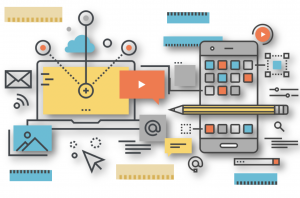Elementary Educators’ Experiences Teaching during COVID-19 School Closures: Understanding Resources in Impromptu Distance Education
 Because of the COVID-19 pandemic in late 2019 and early 2020, universities, schools, and businesses in the United States closed and moved online (CDC, 2020; “A Timeline of COVID-19 Developments in 2020,” 2020). By April, 2020, it became clear that the school year would end virtually, (Anderson, 2020). Teachers throughout the United States found themselves suddenly teaching remotely. Looking at P-20 context for education, that is the understanding of education as a continuum rather than segmented parts, examining elementary implications for distance education during extended school closures provides additional information about foundational distance learning in younger students and their educators’ responses to distance education. Educators, in this experience, were as much learners as they were teachers, highlighting the P-20 educational continuum. The term Distance Education in this study refers to learning that happens either synchronously or asynchronously while learners and educators are physically distant. Materials can be mail-based, web-based, app-based, or broadcast. Distance education can refer to instructor guided or independent study. Johnston (2020) highlights different terminology for distance education, each emphasizing the ‘education’ aspect of the model. However, limitations of socioeconomic status and of access to technology, both technology-based and non-technology-based elements of distance education are included in this study.
Because of the COVID-19 pandemic in late 2019 and early 2020, universities, schools, and businesses in the United States closed and moved online (CDC, 2020; “A Timeline of COVID-19 Developments in 2020,” 2020). By April, 2020, it became clear that the school year would end virtually, (Anderson, 2020). Teachers throughout the United States found themselves suddenly teaching remotely. Looking at P-20 context for education, that is the understanding of education as a continuum rather than segmented parts, examining elementary implications for distance education during extended school closures provides additional information about foundational distance learning in younger students and their educators’ responses to distance education. Educators, in this experience, were as much learners as they were teachers, highlighting the P-20 educational continuum. The term Distance Education in this study refers to learning that happens either synchronously or asynchronously while learners and educators are physically distant. Materials can be mail-based, web-based, app-based, or broadcast. Distance education can refer to instructor guided or independent study. Johnston (2020) highlights different terminology for distance education, each emphasizing the ‘education’ aspect of the model. However, limitations of socioeconomic status and of access to technology, both technology-based and non-technology-based elements of distance education are included in this study.







